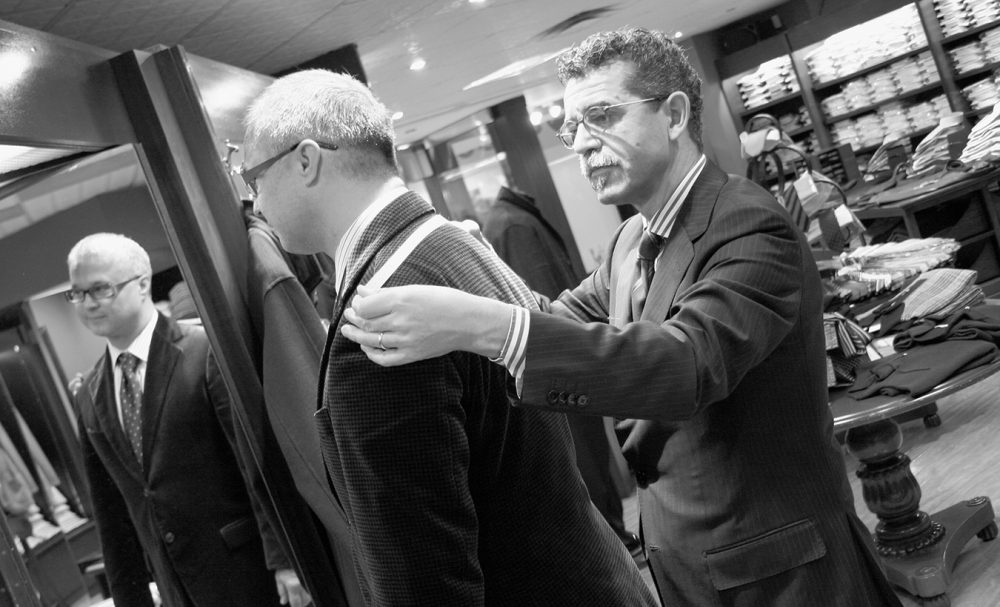Bruno Magnaguagno is a tall, elegant, quietly expressive man. He has worked for many years as a master tailor, first as an apprentice in his home city of Vicenza, in the Veneto region of Italy, and later in his own bespoke tailoring business, his abito privato. He is, of course, impeccably dressed, and recalls the day his first “owner” took him in for training. “He was very particular, and a very nice man, though. I was 14 at the time, my mother was working at the factory, and brought me in one day. At the age of 20, I joined with the friend of my owner, and there I was taught all the secrets of the great tailors. He was himself a third generation tailor, and he taught me everything.”
Signor Magnaguagno pauses, thinking back on those long years of apprenticeship. “Quality is always the first thing. There are many steps in custom-making a suit—nearly 200 distinct steps—and a tailor must know each of them. Eventually, though, it was too much work. I could not keep up with demand. Pal Zileri contacted me when I was 38 years old, and asked me to join them.” He did, and over the years his job description has changed . “We make the suits by hand, still. Every stitch. But today, we have artisans who are experts at, for example, two or three stages in the process of building a garment. They know the stages before and after their particular expertise, but they focus on a very specific set of tasks. My job is to ensure quality at every step, since I know every step in the process. So I oversee the production. We spend a lot of time checking everything. Check, check, check.”
The wool used at Pal Zileri comes from a production facility in Tasmania, Australia, where the sheep wear protective “sweaters” to preserve their wool from dust and soiling. The wool has tremendous tensile strength, given how thin it is. This makes it possible to create a fine garment that will wear well over time, and hold its shape. “The most difficult part of the process, of the 200 or so steps, is putting the fabric and the canvas together,” says Magnaguagno. He opens his jacket and points to the seam near the shoulder, where the inner lining and the outer fabric meet, where the material acts as a kind of pad at the shoulder. “This is the most delicate thing. Too much tension and the suit will look tight, and never fit correctly. Too little tension and the material will sag a little, then begin to crease, and will never look crisp.” This process, all done by hand, requires a large amount of instinctive skill. “It is not art, but I feel it is very close to the arts,” he says. And, yes, he can spot a well-made suit from over 100 metres away. “It is in the light. High-quality wool reflects and absorbs light in a different way. It has a little bit of shine to it—not too much, not too bright, but just enough. That is what tells you right away, this is a nice garment.”
Photo: Paul Fazzari, Fazzari Fashions.








